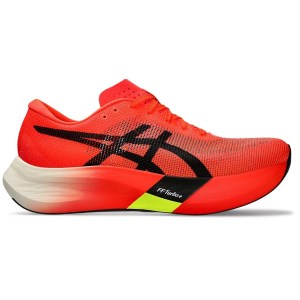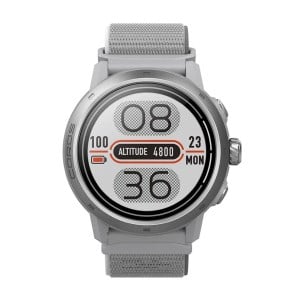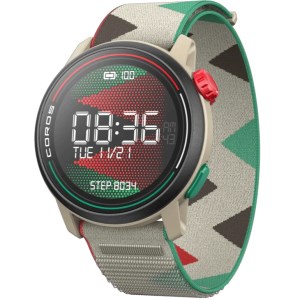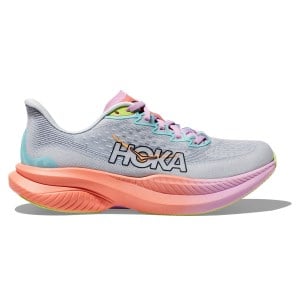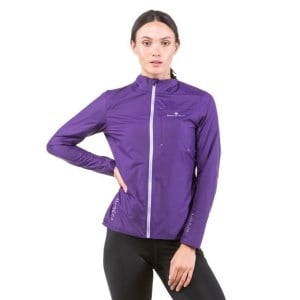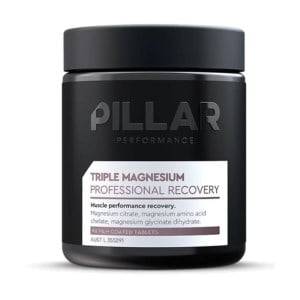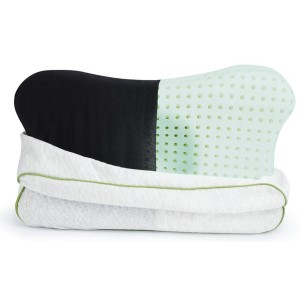How To Run Your Fastest Parkrun / 5K PB
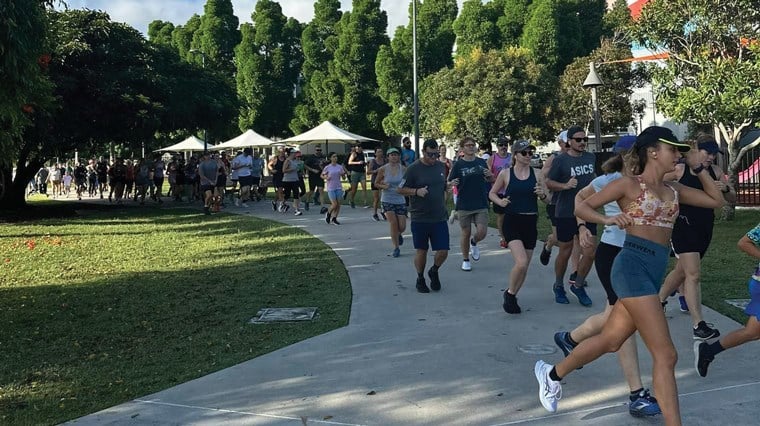
Your running speed can be influenced by your age, gender and your genetics. However, there are aspects you can control to cut seconds or even minutes off your 5K personal best (PB) – whether it’s during everyday training, race day or parkrun.
Once you’ve mastered the 5K training plan, a motivational speed goal can help progress your running ability. Training to become a faster runner not only benefits your performance, but improves the strength of your bones and muscles and adapts your body to move and use oxygen more efficiently. Running at speed burns calories quicker and activates more muscle fibres compared to a slower pace.
However, increasing your running speed through speed workouts isn’t the only factor that adds up to less time on the stopwatch.
From goal setting and a positive mindset, to your pacing strategy and running form, we dive into the details of how to run faster naturally – plus a few ‘speed tricks’ like wearing carbon-plated running shoes such as super trainers. Even factors on the day like what you eat and how you sleep can determine whether you achieve a personal best.
We discuss both the bigger picture and the nitty-gritty of what makes you a faster runner, with a focus on achieving a 5K PB to make this goal accessible to people of every ability. Alongside speed tips that can apply to every 5K race or run, we also share specific tips on how to run your fastest parkrun to help make this inspirational weekly event support your speed goals.
With parkrun rising in popularity, its positive benefits on your physical and mental health are here to stay – helping you keep consistent and committed to your running journey.
1. Set a specific & measurable speed goal

Having a quantifiable goal in mind – a specific finishing time on the stopwatch – can give you the drive to push for more pace compared to the broader goal of “I want to run faster”. Having a number to aim for helps ground your goal in reality and gives you a better sense of your progress. How To Choose Smart Goals can give you detailed goal-setting guidance to get you started.
Let’s say your current 5K PB is 35 minutes and pairs running with intermittent periods of walking. An appropriate long-term goal could be to run 5K in under 30 minutes. This is challenging enough to keep you motivated, and realistic enough to strive for without becoming disheartened.
You could break this goal into ‘1 minute milestones’ to celebrate your continuing progress as you crack a sub 34 minute, sub 33 minute and so on parkrun PB. This could be achieved by gradually replacing walking periods with a faster pace as your body adapts through training, alongside practising our tips on how to become a faster runner below.
Running coach and Sportitude store manager Shaun O'Callaghan's Couch To 5K Running Plan can help you achieve this in potentially as soon as 6 weeks. Once you can jog/run 5K consistently without stopping, your speed can really become the focus.
Don’t set yourself up for disappointment by expecting to cut 5 minutes off your finishing time in one week. This is a process that can take months – so enjoy the journey and remember to be grateful of your abilities both current and progressing, because conquering 5K is its own accomplishment.
2. Ensure your PB goal is achievable, relevant & personal to you
Not only should your PB goal be specific and quantifiable, but it should be achievable and relevant to your life circumstances. For example, if you’re returning to running after giving birth with a running pram in tow, compare your finishing time with the previous week, not to your time running without a pram. Running with a pram can make you a stronger runner and set the foundations for an active lifestyle for your little athlete – so embrace it.
It's important to shift your PB goal to align with your life. If you’re recovering from injury, celebrate that you’ve returned to parkrun as a goal in itself. Rather than comparing your current PB to your pre-injury PB, look towards the future.
The same applies for your age. A 'good 5K time' will vary based on both your age and gender. Nothing is stopping you from running strong in your 40s, 50s and beyond if you’re consistent in your training, but you may find reward and motivation in setting a goal for an age-grade PB rather than a lifetime PB. Setting realistic, attainable goals personalised to you and your current ability is key.
Be aware that progress isn’t always linear week-to-week. Improvements in speed and endurance naturally taper as your body adapts, so be kind to yourself even if the number on your sportswatch today isn’t what you hoped.
Learning how to deal with a bad run is also part of the process – but don’t give up. With commitment, consistency and the passion to chase a challenge, you’ll naturally see improvements as your running journey progresses.
You may also wish to keep a training journal. Even jotting down a few notes on your phone after each run to document what areas you were successful, and where potential improvements could be made may be motivational and beneficial to you.
3. Be consistent and committed to your training
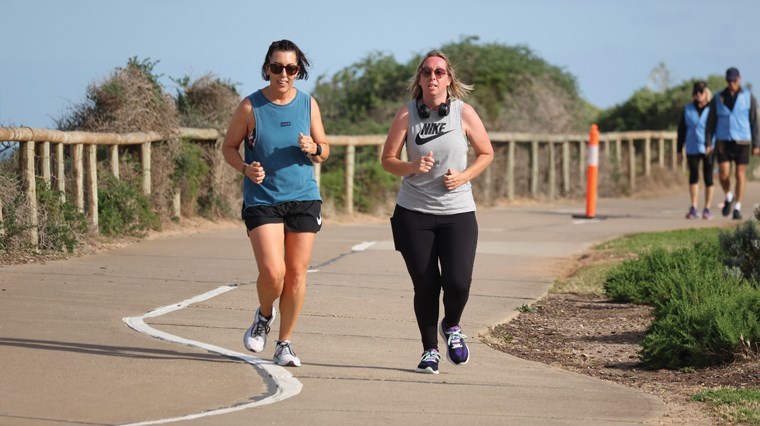
You'll naturally become a better runner by doing exactly that – running. Yes, you can target your running workouts or even look into heart rate training plans to really pinpoint what aspect of running you wish to improve – from aerobic base and endurance to speed.
However, consistency in your training – that is, committing to running regularly – is key to see improvements in the weeks, months and years ahead. Where runners can fall off track is when they take an extended break for potentially months, then expect to pick up where they left off. Your body has an enormous potential, but must adapt to an increased training load over time.
'Muscle memory' makes it easier to regain fitness rather than starting from scratch, but don't let procrastination sink in. The quicker you return to running, the more natural it will feel. Even though the foundations of fitness you built in the past won’t go to waste, a gradual adaptation is still necessary after a running hiatus.
By devoting yourself to running 2 - 4 times a week you’ll be improving your cardiovascular health, muscle strength and cultivating a positive mood. You will be sustaining your body at a level of fitness that can be built upon by targeting key workouts to your specific running goals - in this case, speed.
Once you’ve cemented running into your lifestyle, you can help avoid a performance plateau by increasing your training volume or intensity gradually - and we'll talk about this in terms of speed workouts specifically below.
Like your specific PB goal, the time you commit to running per week should be realistic. It can be challenging juggling work, family and social commitments, but consider your running sessions as self-care that will nurture positivity in all aspects of your life.
Reach out to a friend - a running buddy who will join you on your journey and help hold you accountable, or a family member who can lift other responsibilities off your hands like watching the kids once or twice a week, so you can focus on your training. Asking for help should be encouraged, and those closest to you will more than likely be happy to provide it.
Of course, consistency shouldn't be at the cost of flexibility. Don't beat yourself up for missing a training session when other commitments must be addressed, and don't try to overcompensate by doubling up the intensity of the next one. This will put you at high risk of overtraining and potential injury. Instead, lace up in your running shoes when you have the next opportunity and flow back into your training plan.
4. Have a 5K training plan & introduce speed workouts
Ironically when training to run faster, it doesn’t mean every workout should be based around speed. For new runners, it is often recommended you focus on endurance before setting a faster pace. This 5K training plan can help guide you and build your confidence to comfortably jog/run the distance.
From here, your running workouts can be varied in their duration and intensity. A combination of easy/recovery runs and long runs (to increase your aerobic base) with a weekly speed workout will support consistent, balanced improvement in all aspects of your running. The high intensity of speed workouts means that they shouldn't be performed on consecutive days - your muscles need an opportunity to repair and recover.
Structured speed workouts like tempo training (maintaining a comfortably difficult pace over a sustained distance) or interval training (short, fast bursts of speed broken up by light walking/jogging recovery periods) train you to run faster for a longer period, at a lower perceived effort.
Fartlek training is also a natural fit for speed-motivated runners – and it’s fun. Unstructured in nature, it involves injecting your run with varying paces – from easy-going jogs to high-intensity sprints, based on feel and letting your body be your guide.
It’s a fantastic training method for parkrun enthusiasts that prefer more flexibility and control in their speed workouts. Fartlek training gives you an opportunity to trial different paces and the internal training load they put your body under in a pressure-free scenario. The experimentation you do during fartlek training can also help you learn to pace yourself consistently on race day or at parkrun.
5. Plan your pacing strategy
Lining up for race day or in a vibrant parkrun pack with the air buzzing with excitement is undoubtedly going to put a spring in your step. But rather than launching off at top speed with the crack of the starting ‘gun’, run mindfully and save your energy.
Your pacing strategy for 5km has a dramatic influence on whether you achieve a 5K personal best. You may want to get ahead of the pack early, but giving your all in the first 5 minutes also runs the risk of burning out early - potentially sabotaging your efforts.
How to run faster without getting tired is less about speed and more about pacing. Your pace should be sustainable for the entire event and potentially leave a little energy in reserve for the final push in the last 800m – 1km. As we mentioned previously, fartlek training is a wonderful opportunity to experiment with pacing in preparation for a PB-focused run.
You may find success in beginning your 5km run or parkrun at a relaxed pace, then gradually increase speed until you reach a comfortable, even and steady rhythm. This pacing strategy will give your muscles the opportunity to warm up to a faster pace.
It's honest to the fact that many runners achieve a faster finishing time when running a negative split – meaning the second half of the race is fractionally faster than the first half. This method can be beneficial in the long run and support your endurance for the entire 5K. It can allow you to run easier at less perceived effort compared to kicking off with a sprint which will leave you out of breath.
Another popular approach to pacing is achieving an even split - that is, the second half of the running event is run for the same time as the first half.
This can be broken down even further. If you were to run the same pace consistently for the entire 5K run:
- 35 minute PB = 7 min/km
- 30 minute PB = 6 min/km
- 25 minute PB = 5 min/km
- 20 minute PB = 4 min/km
It isn't necessary to be this exact when it comes to your real-world runs - keeping in mind your pacing should also adapt to the terrain and the conditions. However, the breakdown above can give you guidance on what it takes to achieve a specific time for your 5km runs, and how to pace for parkrun at a speed that's suitable for you.
Running at a consistent and sustainable pace allows you to focus on maintaining a proper running form for increased running efficiency. Having a running partner with similar goals and a similar ideal pace as you, can help guide you throughout your training and during parkrun.
6. Improve your running form
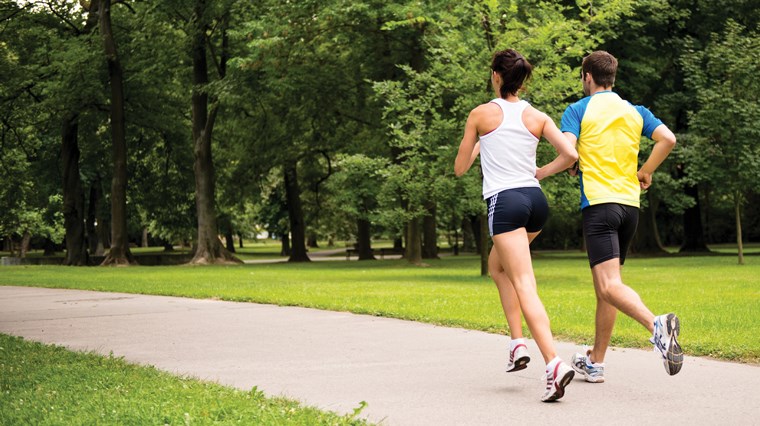
When seconds literally count to achieving a PB or running just short of it, taking a closer look at your running form may be the deciding factor of whether you achieve a PB that week. Run confidently – keeping your eyes forward, head level and hands and shoulders relaxed. Ensure your torso is straight to avoid slouching and to improve your lung capacity – allowing you to breathe better on your runs.
Your arms should swing by your sides (not crossing over your midline) to support speed and balance. To conserve energy, keep the movement compact and streamlined, with your arms remaining close to your body.
You should land with ‘soft’, slightly bent knees to avoid jarring impacts and to support smooth transitions, avoiding excess bounce which can waste energy. A slight forward lean from your ankles can also support your overall running efficiency.
Your running gait should feel natural to you – whether you’re a forefoot runner, midfoot runner or overpronator and there’s no cookie-cutter answer to which is best – so don’t set out to change your footstrike if it keeps you comfortable and injury-free.
7. Run faster by increasing your cadence or stride length
With conscious training, you can increase your stride length or cadence as a means of increasing speed. These strategies to become a faster runner have been a popular topic in the running community recently with Asics launching two versions of their MetaSpeed road racing model – the Asics MetaSpeed Sky and Asics MetaSpeed Edge.
The Asics MetaSpeed Sky caters to stride style runners – runners that achieve faster speeds by extending their stride length. The Asics MetaSpeed Edge caters to cadence style runners – runners that achieve faster speeds by increasing the number of strides per minute.
If that piques your interest, be sure to check out the brand-new Asics MetaSpeed Edge Paris and Asics MetaSpeed Sky Paris below.
How to increase your stride length
Your stride length can be naturally improved through increasing leg strength and flexibility, as achieved through targeted training such as weight training, hill workouts, speed workouts and stretching.
Increasing stride length isn’t about reaching further with your leading foot to cover more distance, but applying more force (power/thrust) to the ground on footstrike, increasing air time as you propel forward. Your feet ideally should be landing in the same place as if you were cadence running – directly underneath your body for a healthy body alignment and efficient running posture.
However, beginner runners often make the common mistake of overstriding when attempting to increase stride length. This can be identified by the feet landing in front of the hips which can risk injury, increasing impact stresses to your knees. This jarring landing also acts as a ‘brake’, having the opposite of the intended effect which is speed.
How to increase your cadence
If you’re a beginner, setting out to increase your cadence to become a faster runner is a safer and more accessible strategy than increasing your stride length. The term cadence can go by many names - stride rate, stride turnover and stride frequency - but they all refer to the same concept, your steps per minute.
An optimal cadence for most runners is 160 - 180 steps per minute, with elite runners often having a cadence of 180 steps per minute or more. The 'right' running cadence should be personalised to what is ideal for you.
To increase your cadence, aim for your feet to land as close as possible to the sweet spot beneath your hips - with a focus on shorter, faster steps. This will reduce stress to your legs compared to overstriding, and decrease the impact forces running through your body.
Incorporating a skipping rope into your training is a practical method to encourage faster foot speed that can be applied back into your running. Skipping also naturally improves your posture and cardiovascular health - both of which will make you a better runner.
As always, any changes to your biomechanics should be done gradually. Focus on mastering your running form before accelerating the pace.
Want to know more about your stride length and cadence? Both of these running metrics can be calculated by advanced sportswatches like these top options from Coros below.
8. Do exercises that increase your speed like hill training
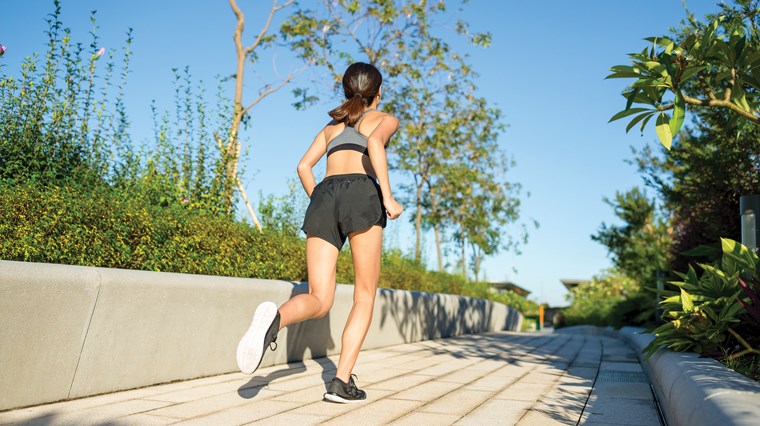
Hill training makes you a faster, stronger runner. It adds an element of resistance to your runs – helping you develop more powerful muscles including your glutes, hamstrings, quads, calves and hip flexors.
Hill training is essentially strength training specific to the muscles used in running. It also activates the fast-twitch muscle fibres in your legs to improve your power. With an improved power output, you can enjoy more effortless speed.
You can rely on a treadmill for hill workouts, allowing you to have precise control of the incline, but really all you need is the world around you (unless where you live is pancake-flat, in which case you may need to travel a touch further).
Training on hills with different inclines and elevations provide variety in terms of the challenge and the resistance applied to your muscles. Hill repeats simply consist of running or sprinting up the hill (at a snappy pace suitable for the distance/elevation), lightly jogging or walking the downhill for recovery, then repeating.
Hill training can be intimidating, but its challenges help build mental fortitude as you ‘conquer’ gravity. Reaching the summit is rewarding and running on a flat will feel like a breeze in comparison. With stronger muscles, you’ll be at reduced risk of injury to keep you on track of your training and to increase your speed.
9. Warm up
Lay out your running clothing and race or parkrun essentials the night before – giving you the mental headspace in the morning to prepare and arrive early, rather than hunting for your favourite running socks and cutting into your warm up time.
Warm ups are valuable not only for injury prevention, but to support performance. Performing dynamic ‘moving’ stretches pre-run benefits your mind and body in numerous ways.
- Literally warming up muscles – increasing the flow of oxygen-rich blood to support performance, muscle contractions and recovery
- Limbering up your muscles to increase flexibility and mobility – allowing you to run faster and more efficiently while minimising risk of muscle tears
- Increasing your heart rate to gradually transition from a pre-workout state to running
- Priming you mentally to perform – boosting your alertness and concentration
From side lunges to lateral leg swings, high knees to hip rotations – putting aside 10 – 15 minutes for these stretches can ensure your muscles are up to the task. Even a light jog on the spot can help acclimatise your body to more high-intensity efforts like running a PB.
Especially on chilly parkrun mornings, a little bit of love for your muscles goes a long way to put them in a run-ready state.
10. Wear the right running shoes for you & consider super trainers
Achieving a PB is not about wearing the fastest running shoes (although with innovative technologies from top brands, these can undoubtedly help), but wearing the right running shoes for you. A fast running shoe isn't going to meet the criteria if it doesn't work for your feet - and in many cases it's less about being fast, and more about supporting you to become a more efficient runner.
Discomfort is a distraction – and when you’re distracted, you’re not running at your best. Choosing the best running shoes for you that cater to your personal cushioning and support needs based on your foot type can help you keep your focus on running a PB.
You may prefer a running shoe that can double up as your trusted daily training shoe and your 5K PB shoe – something like the versatile and joy-inspiring Hoka Mach 6 – and that’s A-OK, especially if you want a do-it-all shoe. Or, you may have a running shoe in your shoe rotation that you reserve purely for racing and/or tempo training.
Traditionally, racing shoes had a laser-sharp focus on being lightweight to support speed – with the trade-off being less structure and cushioning. In today’s market, there is a wider spectrum of ‘race-ready’ offerings available that meet more criteria in terms of durability and comfort.
For serious runners looking for a modern edge, super shoes with propulsive carbon plates and responsive ‘super foams’ embedded in the midsole can improve your running efficiency and conserve your energy – which can be applied back into your speed.
This formula gives you the snappy, performance-based characteristics of a racing shoe, paired with shock-absorbing cushioning to keep your feet feeling protected and more energised as you hit the pavement. These qualities make many super trainers ideal for longer runs, but also for crushing those 5K PBs and your tempo training.
From the Saucony Endorphin Speed 4 to the max stacked Hoka Mach X – many fast running shoes have a rocker geometry (Saucony’s SpeedRoll or Hoka’s early stage Meta-Rocker) for a smooth, energy-preserving ride.
Or for an option that’s aggressively fast in the Hoka shoes range, the new Hoka Cielo X1 arriving 22 March 2024 should be on your radar as the brand’s flagship racing shoe.
Want to learn more about super trainers? Check out the Top 6 Super Trainer Running Shoes by Sportitude shoe expert Nathan Pope to determine if they’re the right fit for you.
For a personalised shoe fitting experience, book a free 15 minute video chat in a Live Fit session with our Sportitude shoe experts. Alternatively, make an appointment here to discover your RunDNA at Sportitude Running at Hindmarsh or Sportitude at Fullarton.
11. Enjoy wholesome, balanced nutrition

Your goal of achieving a personal best goes far beyond the starting blocks. Your everyday nutrition is fundamental to your performance – ensuring your body is receiving the carbs (for energy) and protein (for muscle growth and repair) to sustain your training and support your overall wellbeing.
Eating nutritious meals that are rich in wholegrains and include a plethora of different coloured vegetables and fruit will not only help fuel your body, but keep you feeling more motivated, energised and uplift your mental health.
It's easy to forget the role that hydration plays in your overall nutrition, which is ironic considering how critical water is to not only your performance, but your survival. Water increases blood volume to support the delivery of oxygen and nutrients to your active muscles, regulates body temperature to prevent overheating and lubricates your muscles and joints.
Needless to say, you can't increase your running speed without adequate hydration.
Check out our Sports Nutrition guide to help kick off your everyday nutrition on the right foot, and 8 Essential Hydration Tips to support your 5K PB goals.
12. Plan your pre-run meal
What should you eat before parkrun or running 5K?
It's a commonly asked question by runners, and the answer should be personalised to you and the time you have available. Some runners may comfortably run a morning 5K with an empty tank, but if speed is your goal, having access to energy can be valuable to help you push the intensity further.
If you’re not naturally an early riser, arriving at parkrun which begins between 7am and 9am in Australia depending on what state you’re in, may be its own challenge when it comes to fitting in breakfast beforehand.
Generally, it’s recommended that you wait 3 – 4 hours after eating a large meal or 2 – 3 hours after a small meal before running to avoid digestive upset and cramping. Your body is amazing, but nevertheless multi-tasking between digestion and muscle movement during your runs can make you feel heavy, sluggish and force you to slow down your pace.
If you’re short on time, we recommend leaving the full brekkie to post-run and opting for a light, carb-rich snack 30 minutes – 1 hour beforehand like a banana, orange or half a fruit smoothie that’s easy to digest and gives your body quick access to energy.
If you have more time up your sleeve, you may prefer more substantial pre-run fuel such as:
- Oatmeal with berries (keep in mind the high fibre content of oats may not agree with every runner on parkrun/race day as it can be more challenging to digest than low fibre options)
- Low-fat yoghurt with granola and fruit
- Toast/bagel with nut butter and banana slices
- Full-sized fruit smoothie
Should you carb-load before a parkrun or running 5K?
Carb-loading refers to consuming large, carb-heavy meals and reducing intake of protein and fat in the days leading up to a running or sports event.
In terms of running, carb-loading is best reserved for longer distances that surpass 90 minutes such as half marathon or marathon. In these situations, carb-loading can provide a sustainable energy source to support endurance over long distances.
During shorter runs like a 5K or in a parkrun scenario, carb-loading may result in bloating and discomfort, being detrimental to your goal to keep your body feeling light and fast to chase your PB.
13. Be adaptable to the conditions
Running in less-than-ideal conditions can build grit and confidence that can make running in favourable conditions comparatively feel more effortless. It is this attitude of perceiving obstacles as challenges that can make a good runner great, and solidify your mental resilience.
No matter the pace, every run you complete is one run closer to achieving your PB. Be weather-wise to chase a 5km PB when conditions are favourable, and use less-than-ideal weather as opportunities to train.
Preparing for the conditions – like wearing a water-resistant running jacket for rainy autumn runs, or keeping a water bottle close at hand in the heat of summer allows you to train smart. In the case of parkrun, you may find there’s a smaller turnout on rainy days – giving you the opportunity to really focus on your pacing and running form, without the worry of congestion.
If the weather is sweltering hot, it won’t only be detrimental to your running performance, but can be harmful as the risk of dehydration increases. It’s on days like this where you’re better off sticking to the treadmill in an air-conditioned space, running in the coolest parts of the day and slowing down the pace, using your body as your guide.
Even in ideal conditions, what you wear counts. Everyone from beginner runners to parkrun veterans should opt for sweat-wicking, lightweight running clothing all-year round and layer as needed when the temperature drops.
Unlike cotton which is soft but sweat-absorbent, holding moisture against your skin, these run-ready synthetic fabrics keep you feeling lighter. With a focus on performance, they help save precious grams while maximising comfort and your mobility to allow you to run faster and more efficiently.
14. Prioritise recovery
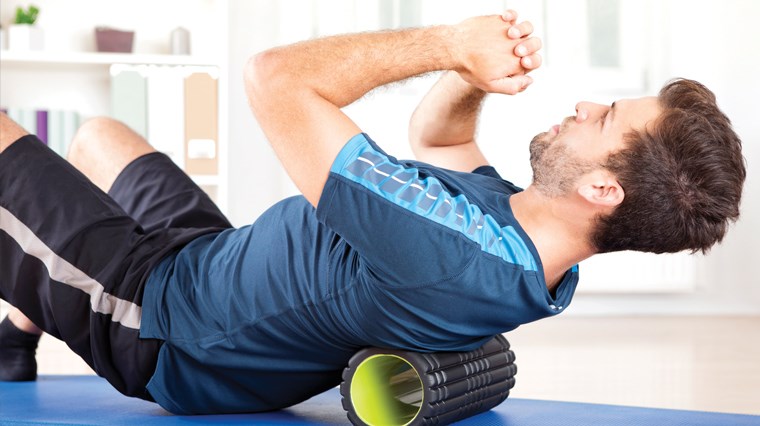
You shouldn’t have tunnel-vision on training only, even with a goal like achieving a new 5K PB. Your recovery strategy requires equal attention.
In How To Support Recovery From The Inside Out, we highlighted that “Recovery is the way you replenish your body nutritionally, rejuvenate through sleep and support muscle repair”. It’s valuable to keep this recovery trifecta in mind – nutrition, sleep and muscle repair – when setting yourself up for success in any running goal.
This may include everything from incorporating a Pillar magnesium supplement and foam rollers into your training plan to minimise muscle cramps, to practising positive sleep habits.
To dive into the details of each of these recovery elements, check out the following blogs below.
Nutrition
Sports Nutrition: Healthy Carbs, Protein & Fats To Improve Performance & Recovery
Magnesium Is Good For Muscle Cramps, Sleep & Recovery. Here's How To Get Enough.
Sleep
7 Sustainable Tips To Improve Your Sleep
How Quality Sleep Makes You A Better Runner
Muscle Repair
Foam Rolling Tips To Improve Your Recovery & Performance
Everything You Need To Know About Massage Guns
-
Pillar Triple Magnesium Professional Recovery - 90 Film Coated Tablets
-
Blackroll Ergonomic Memory Foam Recovery Pillow
15. Strengthen your mental toolkit
Many runners say 90% of the challenge of running is mental. Training your mind as well as your body is necessary, particularly when your primary goals are speed or endurance.
Speed-driven runners must look inward, cultivating positive self-talk like “You can do this!” to find the inner strength to maintain a consistent pace or to push for more intensity, particularly when it comes down to the final stretch.
If you wish to sustain speed for a longer duration, it can help to break up your 5K run, race or parkrun into smaller chunks. For example, challenging yourself to maintain the pace until reaching a landmark like a lamppost, and then reaffirming that goal. In essence, this is a method of compartmentalising discomfort. It sounds simple, but achieving these small milestones can build your confidence and help keep your pace consistent.
Visualising your race, running event or 5km tempo run from beginning to end can not only keep you inspired by a focus on positive outcomes, but prepare you for any obstacles – from how to deal with cramping to congestion at parkrun. This means you can adapt more smoothly when things don’t go to plan, and when they do, you can dig deep feeling motivated by the emotional reward of a 5K well-run.
Last but not least, seeking support from friends and family can offer the motivational boost you need to continue pursuing your PB goals. Whether they're running beside you or cheering you on from the sidelines, committing to your goals comes more easily when you share your passion with someone who will support you through every challenge and success.
To strengthen your mental toolkit, check out Paratriathlete Liam Twomey On How To Get Yourself Mentally Fit.
To stay inspired in every stride, check out 9 Positive Benefits Of Running On Your Mental Health.
Parkrun Tips To Run A Faster 5K
16. Choose a PB-friendly parkrun
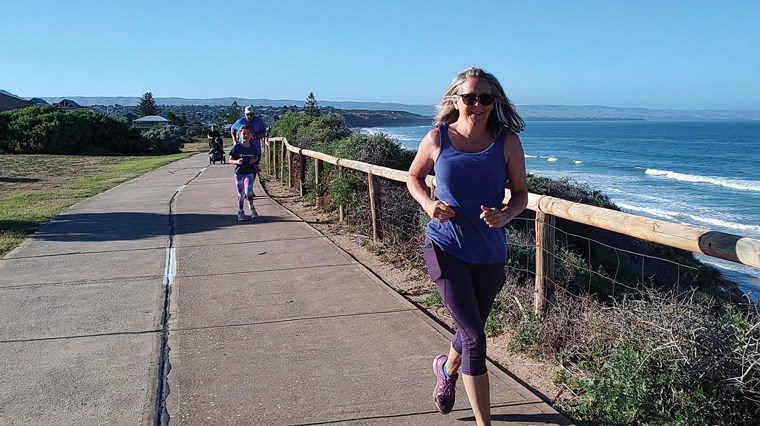
The flatter the route, the faster the run. Every parkrun is the same distance – 5km – but they vary widely in the route and elevation.
Hilly and scenic parkruns are fantastic to use for training days, allowing you to soak in the hill training benefits we mentioned previously. However, when choosing a parkrun for PB purposes, a pancake-flat course with minimal twists and turns is ideal.
Among Australia's PB-friendly parkruns are the peaceful and flat Pakapakanthi parkrun in Adelaide's Victoria Park and the smooth, paved Minnippi parkrun in the parklands of Brisbane's south east. The Curl Curl parkrun in northern Sydney with water views is both flat and fast, yet puts a variety of terrain underfoot - grass, concrete, soft trail surfaces and even a wooden bridge.
The terrain can make a difference, with the consistent nature of paved surfaces allowing you to flow into a smooth rhythm. Alternatively, you may feel in your element when wearing trail running shoes, conquering parkruns like the Cleland parkrun 20 minutes outside Adelaide's city centre, the Bunyaville parkrun north west of central Brisbane or Canberra's Mount Ainslie parkrun that cocoons you in nature and provides the perfect opportunity to come up for fresh air.
In these beautiful and literally breathtaking locations due to the elevation, you’re battling not only the distance but navigating gnarled roots, stones or rough surfaces underfoot which will naturally increase your finishing times.
When you’re chasing a parkrun PB look at not only your performance, but the entire picture. It could be more about achieving a parkrun PB for that specific route, rather than the more expansive goal of achieving a lifetime 5K PB.
You may also wish to steer clear of the more popular parkruns when chasing a PB - although they do cultivate an adrenaline-boosting atmosphere comparable to Australia's best marathons with their vibrant crowds and positive energy.
The Australian parkruns with the highest attendance levels host over 500 runners per week! Set around Melbourne's most iconic lake with a stunning backdrop of the city skyline, the Albert parkrun is among them. On paper it ticks off the criteria for a PB-friendly parkrun - flat, paved and tree-lined for shade, but its popularity means it's best to leave your competitive spirit at home.
Congestion is a natural part of Australia's most popular parkruns, and can be a genuine obstacle if speed is your goal, especially from the starting line and in areas where the path narrows.
However, more importantly, congestion can be a safety issue so always be kind and respectful of other parkrunners. For any parkrun where a PB is your goal, we recommend running the route on non-parkrun days beforehand to familiarise yourself with it and to learn where the best opportunities are to overtake safely.
Check out our top 5 parkruns across different Australian locations to find the right fit for you.
- The Top 5 Sydney Parkruns
- The Top 5 Adelaide Parkruns
- The Top 5 Melbourne Parkruns
- The Top 5 Gold Coast Parkruns
- The Top 5 Brisbane Parkruns
- The Top 5 Canberra Parkruns
17. Choose the right starting point in the parkrun pack
Choosing the right starting point can help shed seconds off your PB. Keep in mind the stopwatch starts when the ‘gun’ goes off, not when you cross the starting line. Ideally, if you're aiming for a PB you've already experienced plenty of parkruns to give you an idea of the right starting position for you.
Be realistic about where you fit in the pack, but don’t sell yourself short. Have the confidence to settle in closer to the front if that aligns with your abilities. It can be easy to feel like an impostor, but believe in yourself. You’ve trained for this and can wear the badge of 'runner' with pride.
If you can run 5K in under 30 minutes, consider starting at the middle of the pack. This will ensure you won't interfere with faster runners chasing their own PB, while avoiding the need to weave through parkrunners moving at a more easy-going pace. This will not only slow your time, but risk collisions that can injure both you and them.
As your confidence grows and finishing time decreases week on week, you may want to inch further to the front of the starting line. As a general guide, runners that place themselves in the first two rows ideally can run 5K in sub 20 minutes, depending on the specific course.
18. Don’t focus on setting a PB every week
You’ve trained hard, give yourself a breather. Remember first and foremost, parkrun is a fun, inclusive event for people of all ages and abilities – an opportunity to connect with your fellow runners.
Not every run should be PB-focused. This can be disheartening and exhausting, resulting in both mental and physical burn out. To take the pressure off and rekindle your motivation, put some parkruns in the month aside for easy runs or volunteering.
Enjoying parkrun at a chat-and-run pace or as a volunteer gives you the opportunity to find inspiration within this supportive community – to share running tips, goals and stories.
You’ll find your legs feel fresher and your mind feels more rejuvenated when it comes to your next PB-focused parkrun if you take the time to enjoy the entire benefits parkrun has to offer.
This includes meeting up with your fellow parkrunners for a coffee or cuppa post-run as an extra incentive to lace up in your running shoes.
Happy running!

